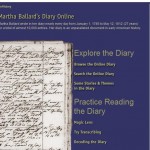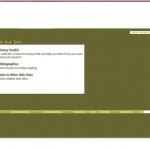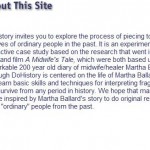The Spatial History Project at Stanford was fascinating. Reviewing the Shaping the West project was helpful in understanding what they are trying to do and how many avenues of history that can connect to the project. For example, while the project focused more so on California it leaves that possibility of other states adding to the model they have set up. In a sense, we could set up a transcontinental spatial history project. Furthermore, it can be linked to all other realms of history how the railroad were impacted socially, politically, and economically. I like the new use for primary sources, it made me question how accurate or available the Union Pacific railroad’s records are? Since the company is still in business, it would seem that many records may still be intact and available. If you have the time I would recommend reading Richard White’s What is Spatial History article. He gives examples of the other spatial history projects going on at the Stanford. He introduces how spatial history as different from “normal history.” The first of his five reasons mirrors the explanation of Landscapes “our projects are collaborative.” This project as whole reminds me of Jackson’s idea of landscapes; I think Jackson would have been supportive of their efforts.
“The Beginning of the Road” illustrated how technology has made projects, such as Alexander Hawkins idea, much easier to visualize and understand. While Scott Berg’s article was interesting, at times it was hard follow and understand what was Hawkins’ project. I watched the Visualizing Early Washington clip and it helped me to finally “see” what Hawkins wanted to do. This article brought up several good points. First of those points was: I was a shocked as Dan Bailey that the library would not have any books on the Washington D.C. landscape. It made me question how many other pieces of “expected history” are missing. I have run into this problem with my own master’s thesis. I had expected books and articles to be written about the Merci Train and have yet to find a legitimate book. The second point brought to light, again by Bailey, was the history drives technology. I have never thought of it this way. However, his point is valid. Projects such as Hawkins’ are able to literally come to life and be presented to a wider audience.
I was excited to look at the findings for the CHNM labs. The website is helpful in making these free and all already created data bases for museum use. But it was not what I expected. I thought it was similar to the “7 Way Mobile Apps are Enriching Historical Tourism.” I understand that these apps and sites are available, but are they being used? I want numbers! I want to be able to see that people are using these available digital histories. I think it would be extremely helpful to rate these program on their popularity and, if possible, who is using them? Are they being used by the general public, in classrooms, or in museums? That being said, the website is an invaluable as a tool to those teaching history. I was drawn to the link “digital campus” where bi-weekly discussions about technology and history are recorded and open to comments. I was disappointed to see that the discussions do not appear as frequent as displayed and only one or two people have contributed to the discussions. This website has great potential to assist in several venues on history and that are overlooked. On an end note I really enjoyed exploring the “Lost Musuem.”



